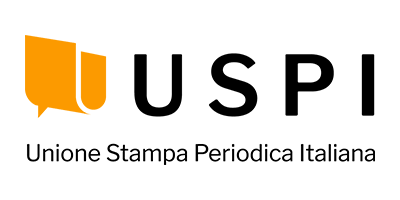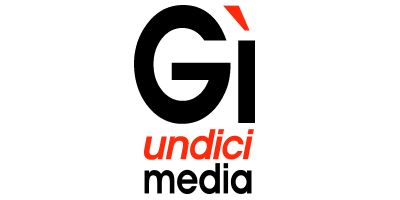New Research Reveals Architectural Technical Debt as Most Damaging to Applications Amid $1.52 Trillion Technical Debt Crisis
As enterprises confront the staggering $1.52 trillion in software technical debt, a new study released today by vFunction, the pioneer of AI-driven architectural observability, reveals that architectu...
Enterprises Grapple with Trade-offs Between Monolithic and Microservices Applications, With 51% Dedicating More Than a Quarter of Total Annual IT/Engineering Budget to Technical Debt Remediation
MENLO PARK, Calif.: As enterprises confront the staggering $1.52 trillion in software technical debt, a new study released today by vFunction, the pioneer of AI-driven architectural observability, reveals that architectural technical debt (ATD) has emerged as the most formidable challenge. The research titled, “Microservices, Monoliths, and the Battle Against $1.52 Trillion in Technical Debt,” found that companies are grappling with the challenges posed by technical debt within their increasingly complex software architectures, leading to slower engineering velocity and challenges with application scalability and resiliency. In response, nearly eight in ten (77%) organizations have implemented enterprise-wide initiatives to address technical debt head-on. More than half (51%) of companies are dedicating more than a quarter of their annual IT and engineering budgets to remediation, including refactoring and re-architecting efforts. The research reveals that software architecture is a critical yet often overlooked driver of business success in the technology landscape, presenting untapped opportunities for organizations to optimize their operations and gain a competitive advantage.
The Toll of Architectural Complexity and Technical Debt Accumulation
Over the last five years, software architects and engineers have faced increasingly complex software architectures, with 44% citing complexity in monolithic applications resulting in a lack of clear domain boundaries and decreasing modularity as a top challenge. Also, nearly four in ten (39%) stated the lack of visibility into architecture, which makes it hard to know dependencies between microservices.
“Architectural challenges and a lack of visibility into architecture throughout the software development lifecycle prevent businesses from reaching their full potential,” said Moti Rafalin, CEO and co-founder of vFunction. “Adding to this, the rapid accumulation of technical debt hampers engineering velocity, limits application scalability, impacts resiliency, and amplifies the risk of outages, delayed projects, and missed opportunities.”
Monolithic architectures bear the brunt of the impact, with 57% of organizations allocating over a quarter of their IT budget to technical debt remediation, compared to 49% for microservices architectures. Companies with monolithic architectures are also 2.1 times more likely to face issues with engineering velocity, scalability, and resiliency. However, microservices architectures are not immune to technical debt challenges, with 53% of organizations experiencing delayed major technology migrations or platform upgrades due to productivity concerns.
Bridging the Gap: The Software Architects’ Role in Addressing ATD
According to C-level executives and leadership roles, the enterprise architect/architecture team is at the top of the list as the primary owner responsible for addressing technical debt within the organization. In contrast, practitioners place engineering leaders at the top and architects closer to the bottom. A clear delineation of responsibilities remains elusive, highlighting the complexity of the issue within enterprises.
Further, despite their central role as custodians of long-term code quality and architecture, software architects are often disconnected from the CI/CD process, with over a third (37%) limited to upfront design involvement. This disconnect stems from various factors, including a lack of processes, tools, and mechanisms to integrate architects into CI/CD, and concerns about architects becoming bottlenecks. However, the data overwhelmingly points to the vital role software architects play in ensuring architectural resilience. When architects had limited involvement in CI/CD, only 44% of respondents reported confidence in their architecture’s resiliency. In contrast, when architects were fully involved in the CI/CD process from planning through deployment, a striking 72% expressed a high degree of confidence in their architecture's resiliency.
Rafalin added, “Bridging the gap between software architects and CI/CD processes is crucial for maintaining solid architecture, scalability, and overall system health in the long run.”
Shifting Left: Harnessing Architectural Observability and GenAI for Technical Debt Remediation and Innovation
Architectural observability is the ability to analyze an application statically and dynamically to understand its architecture, observe drift, and find and fix architectural technical debt. After being provided with the definition, 80% of respondents acknowledged that having these capabilities within their engineering organizations would be extremely or very valuable. This consensus stresses the necessity of having tools and practices to observe and understand software architecture in real time.
When asked about the most effective approaches to ensuring application resiliency, 40% of respondents advocated for "shifting left" – leveraging architectural observability to proactively address resiliency concerns earlier in the development lifecycle, thereby reducing the likelihood of outages occurring. Organizations also see generative AI as playing a pivotal role in application modernization efforts with 41% of respondents planning to leverage generative AI to improve application performance and scalability. Readiness to adopt generative AI increases with company size, with 44% of $10B+ companies saying their applications are fully ready, compared to 25% of $100-499M companies.
“Today’s technical debt reduction measures like code quality and performance observability tools and code vulnerability scans don’t focus on architectural technical debt. Teams still rely heavily on manual efforts and piecemeal knowledge to assess architectural risk and prioritize remediation. Architectural observability offers more than mere visibility into systems; it offers a pathway to more resilient and scalable architectures,” Rafalin concluded.
The research study surveyed more than 1,000 U.S.-based architecture, development and engineering leaders, and practitioners at large enterprises as well as smaller digital-first companies.
Download the full report.
Resources
- Learn about vFunction’s latest AI-guided platform advancements to solve for technical debt in distributed applications.
- Read about vFunction’s vision for AI-driven architectural observability.
About vFunction
vFunction, the pioneer of AI-driven architectural observability, delivers a platform that increases application resiliency, scalability, and engineering velocity by continuously identifying and recommending ways to reduce technical debt and complexity in applications. Global system integrators and top cloud providers partner with vFunction to assist leading companies like Intesa Sanpaolo and Trend Micro in discovering their architecture and transforming applications to innovate faster and change their business trajectory. vFunction is headquartered in Menlo Park, CA, with offices in Israel, London, and Austin, TX. To learn more, visit www.vfunction.com.
Fonte: Business Wire
Related news
Last News
RSA at Cybertech Europe 2024
Alaa Abdul Nabi, Vice President, Sales International at RSA presents the innovations the vendor brings to Cybertech as part of a passwordless vision for…
Italian Security Awards 2024: G11 Media honours the best of Italian cybersecurity
G11 Media's SecurityOpenLab magazine rewards excellence in cybersecurity: the best vendors based on user votes
How Austria is making its AI ecosystem grow
Always keeping an European perspective, Austria has developed a thriving AI ecosystem that now can attract talents and companies from other countries
Sparkle and Telsy test Quantum Key Distribution in practice
Successfully completing a Proof of Concept implementation in Athens, the two Italian companies prove that QKD can be easily implemented also in pre-existing…
Most read
Mastercard Incorporated to Host Information Session on Agentic Commerce…
On Monday, July 14, 2025 at 10:00 a.m. Eastern Time, Mastercard Incorporated (NYSE: MA) will host a session to explore Mastercard’s recent announcements…
Wave Function™ and Packsmith.ai: Redefining E-Commerce with AI Logistics
#3PL--Wave Function™, a New Bedford, MA-based founding partnership company, has invested in Packsmith.ai, a Los Angeles-based, AI-driven third-party logistics…
AI Unicorn EvenUp Opens New San Francisco Headquarters to Catalyze Growth…
#AI--EvenUp, the highest-funded AI technology company serving personal injury law firms, has officially opened its new headquarters at 353 Sacramento…
Amazon Prime Day 2025 Delivers Record Sales and Savings in Expanded Four-Day…
Amazon announced today that Prime Day 2025 was its biggest Prime Day event ever and that customers saved billions on deals across more than 35 product…






